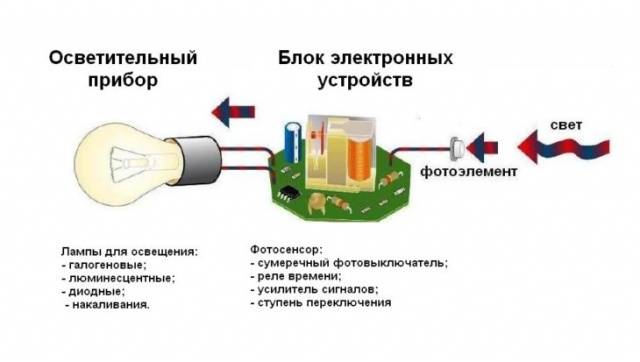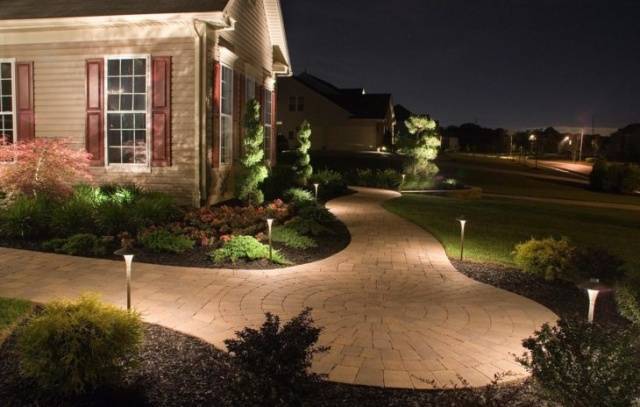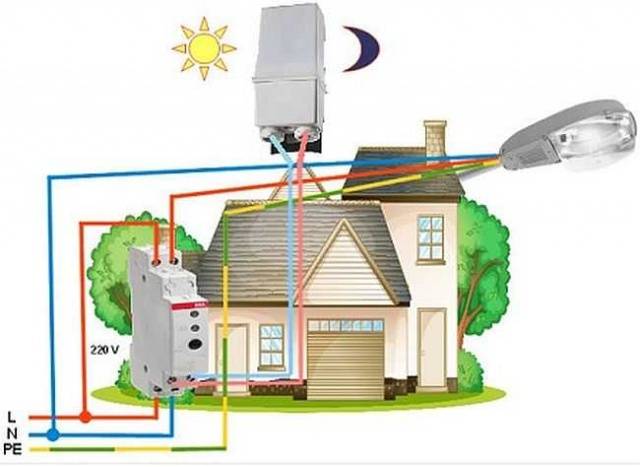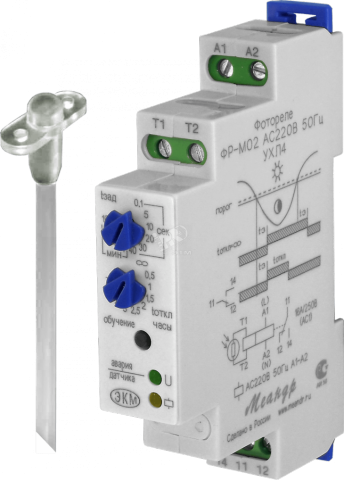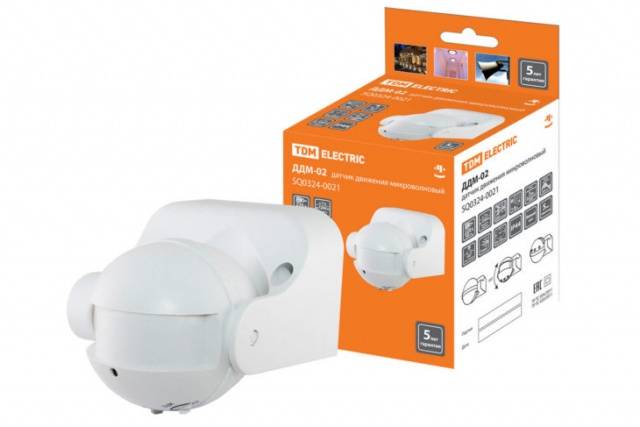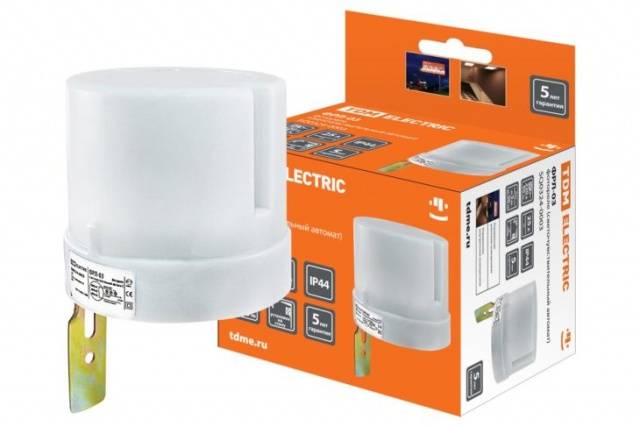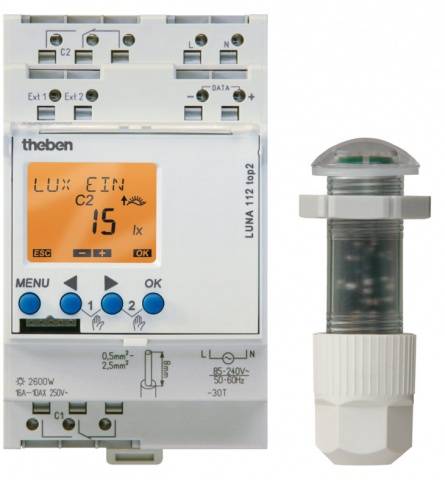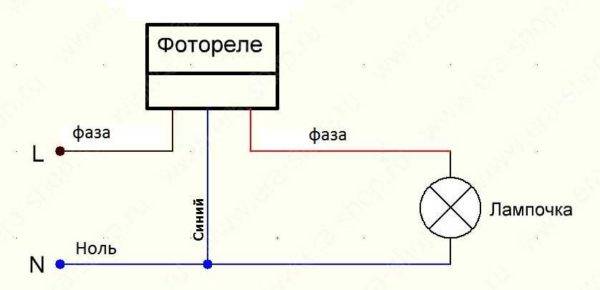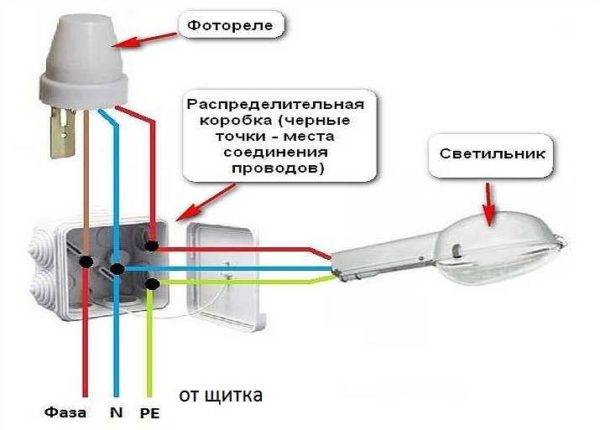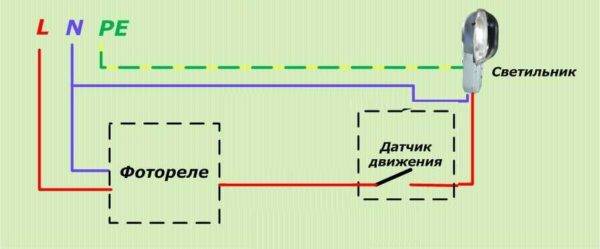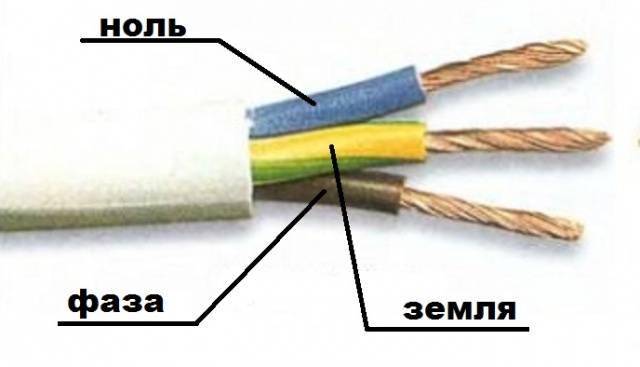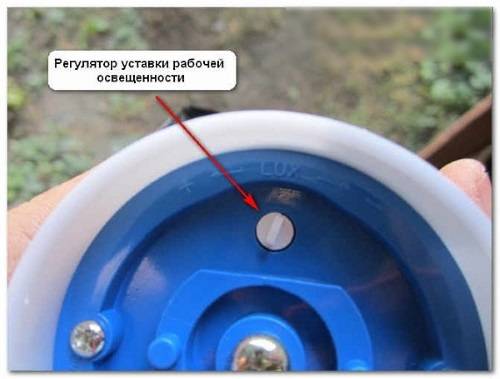Content
- 1 What does a photo relay consist of and the principle of its operation
- 2 Isn’t it possible to live without a photo relay at home?
- 3 Optimal installation location for photo relay
- 4 Main technical characteristics of photo relay
- 5 Types of advanced photo relays
- 6 Differences between photo relays depending on the installation location
- 7 Examples of connection diagrams
- 8 How to deal with wires
- 9 Setting the sensitivity of the photo relay
As darkness falls, street lights come on along the roads. Previously, they were turned on and off by utility workers. Now the operation of the lights is controlled by an electronic device - a photo relay. Lighting automation is especially convenient in remote areas where it takes a long time for service personnel to get to them. Photo relays can be used for street lighting not only by utility services, but also by owners of their own plots. We will now try to find out what this device is.
What does a photo relay consist of and the principle of its operation
This device has many names: photosensor, photosensor, photocell, etc. Whatever it is called, the essence remains the same. The photo relay device is very simple. Inside the device body there is an electronic board with a set of radio components. The soldered photo relay circuit forms an electronic switch, which is based on a photosensitive element. This could be a photoresistor, photodiode, etc.Additional circuit elements prevent erroneous operation of the sensor, help make fine adjustments, and are responsible for other useful functions.
The operation of a photo relay can be seen using a photoresistor. This part has its own resistance that prevents the passage of current. With the onset of darkness, the resistance of the photoresistor decreases. The current passes freely, which triggers the electronic key. This leads to the closure of the contacts of the device to which the lighting devices are connected. With the onset of dawn, all actions proceed in reverse order. Increasing the resistance of the photoresistor prevents the passage of current. The electronic key opens the contacts and the street lighting turns off.
Isn’t it possible to live without a photo relay at home?
An illiterate question about the need to use a photo relay can be asked by a person who does not care about the convenience of his home and the arrangement of the surrounding area. The work of the device is aimed not only at creating beautiful light accents. Photo relays are used for convenient lighting control, as well as energy savings.
Let's look at a few arguments in favor of the device:
- Let's start with convenience. The lighting system is controlled using a switch. It is usually located at the door near the room. Indoors is normal. And take, for example, your yard. To turn on the light you will have to get to the switch in the dark. What if the shed is located in the backyard? A long journey begins in the dark with a flashlight. The photo sensor will allow you to adjust the illumination of frequently visited places, which will save the owner from wandering in the dark.
- Now about saving. Owners of large private plots install many lighting fixtures to illuminate the garage, recreation area, entrance to the house and other places. For the convenience of controlling the entire system, you can use one switch, but what will be the power consumption? The light will shine even in unnecessary places. And in the morning after a stormy holiday, you are too lazy to get up early to turn off the lighting. A device with a photo sensor will do everything itself at dawn. And if you also use a motion sensor, in general, the lighting will only turn on where there are people.
- Photo relay is primitive, but at least some protection against theftV. The light turned on at night in the absence of the owners at the dacha creates an imitation of presence. Not every petty hooligan will dare to enter the yard.
If the above arguments are unconvincing, you can do without a photo relay. But is it necessary to save on your own comfort if the device does not cost that much money? Moreover, you can connect the photo relay with your own hands without any problems.
Optimal installation location for photo relay
In order for the lighting to work correctly, the photocell must be located correctly:
- from dawn to sunset, the photo sensor should be illuminated by sunlight or located in the brightest place;
- The photocell must not be exposed to artificial light;
- The device is placed near the road so that the sensor is not illuminated by headlights;
- A decrease in the sensitivity of the device occurs after the photocell becomes dirty, so the relay is placed at a height convenient for maintenance.
Choosing the right location for a photo relay is a difficult task. Typically, this process involves moving the device around the yard until a positive result is achieved.
Main technical characteristics of photo relay
In order for the photo relay to work properly in the lighting system, it must be correctly selected taking into account the technical characteristics. All devices have the following parameters:
- Each brand of relay is designed to operate with voltages of 12, 24 and 220 volts. For home lighting, the latter option is used. When using low-voltage devices on a 220V network, you will have to install converters. It's expensive and doesn't always work well.
- Amps – the second important characteristic of the device. To calculate the maximum switching current, calculate the sum of the power of all lamps in the lighting system. The result obtained is divided by the network voltage. At home it is 220V. The figure obtained after calculation should be less than the amperes indicated on the photo relay. Otherwise, the device will quickly fail.
- From the sensitivity of the photocell The threshold for turning the lighting on and off depends. It is optimal to use a device with parameters of 2–100 Lux or 5–100 Lux.
- The delay in the response of the photo sensor prevents the lighting from immediately turning off after a brief exposure to light from the headlights of a passing car. The optimal delay is from 5 to 7 seconds.
- Device power affects energy savings. Typically, during operation, consumption is up to 5 W, and during standby - 1 W.
- Degree of protection indicates the place where the use of a photo relay is allowed. For example, outdoors it is optimal to use a device with an IP44 rating.
In very cold or hot regions, it is important to pay attention to the acceptable operating temperature range.
Types of advanced photo relays
The simplest photo relay reacts only to incoming light. However, it is not always necessary to keep the light bulbs on all night. Manufacturers have developed improved devices filled with additional sensors:
- A device with a motion sensor is very convenient. The lighting turns on only when a moving object, person or animal enters the sensor's coverage area.
- A motion sensor, complemented by a timer, allows you to set the device to operate at a certain time. The light will turn on, for example, when the owner comes home late from work, and will not blink in the middle of the night from running cats or dogs.
- The programmable device is very expensive. It even allows you to set the date and time when you want to turn on the lights.
Among all the models, photo relays with a timer and a motion sensor are considered the most popular.
Differences between photo relays depending on the installation location
Manufacturers produce devices for indoor and outdoor installation. The last type of photo relay is designed for outdoor installation. The electronic circuit of the device is protected by a sealed housing that is resistant to aggressive environmental influences.
Photo relays for indoor installation are mounted outdoors in a protective housing or electrical panel inside the building. Only the remote photocell goes outside.
If you decide to make your own controlled lighting at home, it is better to give preference to outdoor-type devices.
Examples of connection diagrams
The simplest connection diagram for a photo relay for street lighting is shown in the photo. The phase wire is interrupted as it is connected to the input and output of the device. Next, the phase from the output goes to the light bulb. Zero comes with a whole wire from the electrical panel bus.It is connected to the input of the photo relay and the load.
Primitive schemes are not always convenient to use and are dangerous. It is better to connect a photo relay installed outdoors to the electrical network using a distribution box, only it must also be sealed. The photo shows a diagram of how a photo relay for street lighting is connected through a junction box.
The photo relay can control the operation of flashlights of any power. Many of them have built-in chokes. In order for a weak device to cope with a large load, a contactor is added to the circuit. As a result, the power of the photo relay should be enough to control the starter, and with the help of moving contacts it supplies voltage to the lighting devices.
When using a motion sensor, a different connection scheme is used. First, the current from the network is supplied to the photo relay, and from it it is already supplied to the motion sensor and flashlight. This scheme turns on lighting when any object moves only at night.
Any of the proposed schemes is simple and can be assembled with your own hands without any problems.
How to deal with wires
Any model of the device has three multi-colored wires. However, an inexperienced person will get confused even in them. You should immediately look at the color of the insulation. Red, black or brown wire is a phase. Blue or green is zero. The third wire is grounding. It usually comes green with a yellow stripe.
If the device only has outputs for connection, then look at the letter designation: N - zero, L - phase, PE - ground.
The video shows the photo relay connection:
Setting the sensitivity of the photo relay
The sensor is configured only after connecting the annual lighting circuit to the power supply. The adjustment sets the sensor's response limit, that is, its sensitivity to light. For these purposes, a plastic screw is installed on the back of the device. To know which way to turn it, look at the designation: “+” indicates an increase in the sensitivity of the photocell, and “–” indicates its decrease.
The adjustment begins by turning the screw all the way to the right. If you decide that it is in this darkness that the lights should turn on, slowly turn the control to the left. As soon as the lights come on, the setup can be considered complete.
As you can see, a photo relay is a very simple device. Installing it is no more difficult than screwing in a light bulb, and the positive result will already be visible as night falls.
